INDIAN ARMED FORCES CHIEFS ON OUR RELENTLESS AND FOCUSED PUBLISHING EFFORTS

The insightful articles, inspiring narrations and analytical perspectives presented by the Editorial Team, establish an alluring connect with the reader. My compliments and best wishes to SP Guide Publications.

"Over the past 60 years, the growth of SP Guide Publications has mirrored the rising stature of Indian Navy. Its well-researched and informative magazines on Defence and Aerospace sector have served to shape an educated opinion of our military personnel, policy makers and the public alike. I wish SP's Publication team continued success, fair winds and following seas in all future endeavour!"

Since, its inception in 1964, SP Guide Publications has consistently demonstrated commitment to high-quality journalism in the aerospace and defence sectors, earning a well-deserved reputation as Asia's largest media house in this domain. I wish SP Guide Publications continued success in its pursuit of excellence.
- MoD initiates comprehensive review of Defence Acquisition Procedure 2020, pushes for defence reforms
- G7: The Swansong
- Kalinga Connect: South Asia to Polynesia
- Advanced MRSAM for India for a greater firepower
- Must Credit DRDO for Operation Sindoor, now what is next for defence R&D?
- Operation Sindoor | Day 2 DGMOs Briefing
- Operation Sindoor: Resolute yet Restrained
MILAN 2024 – the Twelfth Edition
Displaying harmony on the high seas, Exercise MILAN 2024 showcases global maritime solidarity amidst rising challenges
 |
The Author was the Flag Officer Commanding-in-Chief, Southern Naval Command when he retired on November 30, 2021. He is a Navigation and Direction specialist. He was also the Director General Naval Operations and the Chief of Personnel, Indian Navy. |
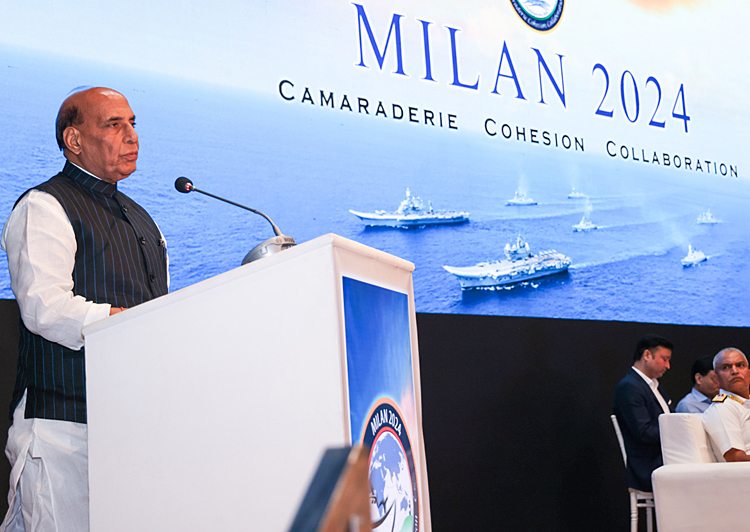
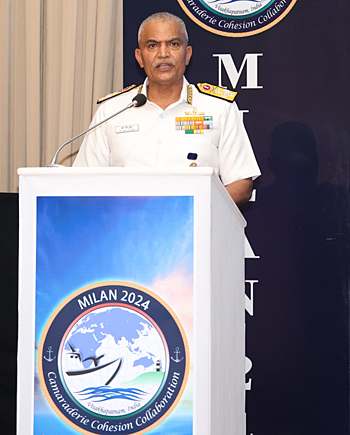
MILAN 2024, the 12th edition of the Indian Navy’s flagship multinational biennial exercise, was held in Visakhapatnam from February 19 to 27 2024 in two phases – the harbour phase from February 19-23 and the sea phase from February 24-27, 2024. The main purpose of the harbour phase is to build bonds of friendship, exchange professional notes and prepare for the all-important sea phase of the exercise. The sea phase seeks to build interoperability between participating navies and exchange best practices.
Diverse Participation and Capability Display
The 2024 MILAN was the largest exercise held so far, with navies from 53 countries across the globe being invited including: Australia, Bahrain, Brazil, Brunei, Cambodia, Canada, Chile, Comoros, Djibouti, Egypt, Eritrea, Fiji, France, Gabon, Germany, Indonesia, Iran, Iraq, Israel, Italy, Japan, Kenya, Kuwait, Madagascar, Malaysia, Maldives, Mauritius, Mozambique, Myanmar, Namibia, Netherlands, New Zealand, Nicaragua, Nigeria, Oman, Papua New Guinea, Philippines, Russia, Saudi Arabia, Seychelles, Singapore, Somalia, South Africa, Tanzania, Thailand, Timor Leste, Togo, Tonga, UAE, UK, USA, Vietnam and Yemen. The invitation list truly reflects the global reach and influence of the Indian Navy and the geo-political heft of India, as also our excellent diplomatic relations across the globe.
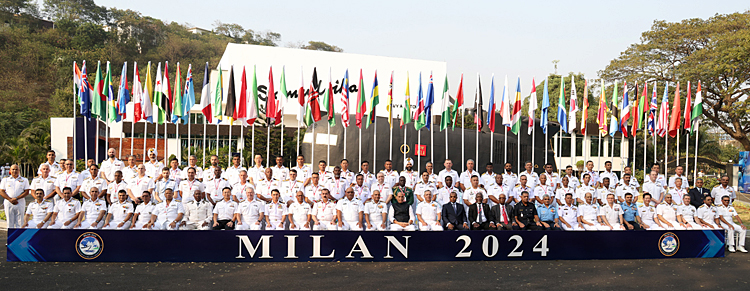
The 2024 MILAN was the largest exercise held so far, with navies from 53 countries across the globe being invited
Ships/delegations from about 50 countries actually participated in the exercise (with the other countries being represented by their diplomatic representatives in India). 15 navies sent their warships and a maritime patrol aircraft. From the Indian Navy, over 20 ships and submarines and over 50 aircraft participated in the exercise. A first for MILAN 2024 was the participation of both the Indian Navy’s aircraft carriers – INS Vikramaditya and INS Vikrant – with their integral air wings. The list of countries attending will surely send a clear message to our adversaries about the capability of India and the Indian Navy to bring together a rainbow of nations. Coming at a time when conflicts in the South China Sea, Europe and the Middle-East are ongoing, the gathering sends a clear message to the world that what unites us is much larger than what divides us.
Harbour Phase and Sea Phase - Complexity and Commitment to Peace
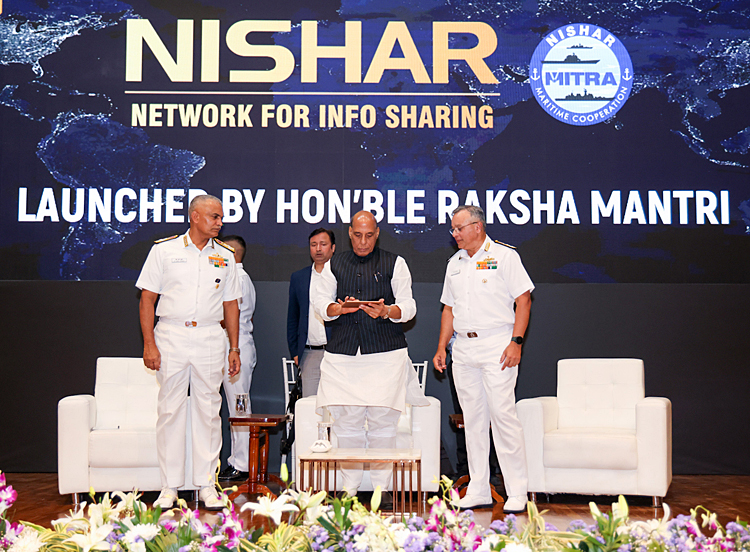
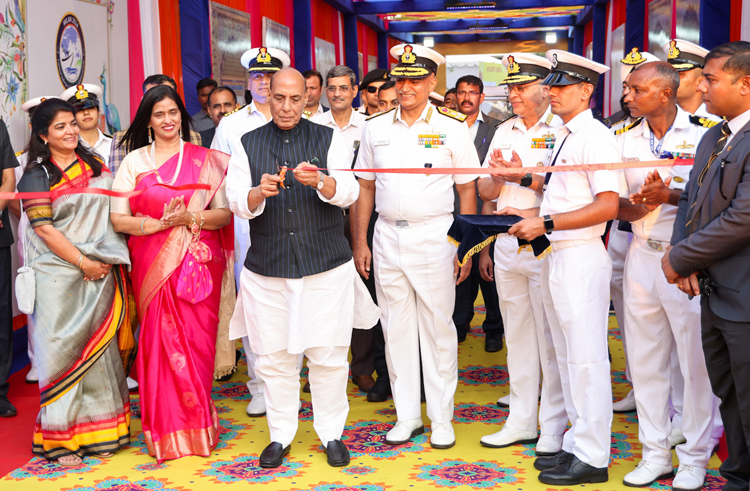
The theme for the current MILAN was ‘Cohesion, Camaraderie, Collaboration’, which aims to strengthen regional cooperation and maritime security, foster interoperability and understanding between participating navies and provide a platform for sharing best practices and expertise. The harbour phase commenced with the opening ceremony on February 19, 2024 for which Defence Minister Rajnath Singh, was the chief guest. The major activities conducted during this phase were the international city parade during which the Indian Navy also carried out an operational demonstration. This is a keenly awaited event by the local populace and included aircraft and helicopter launching operations by the aircraft carriers and ships, submarine demonstration, marine commando demonstration, search and rescue demonstration and a flypast by all aircraft in the Indian Navy’s inventory. The harbour phase also included an International Maritime Seminar, which was inaugurated by the Vice President of India. Themed “Partners across Oceans: Collaboration, Synergy, Growth”, the seminar featured papers and presentations by esteemed speakers from twelve nations.
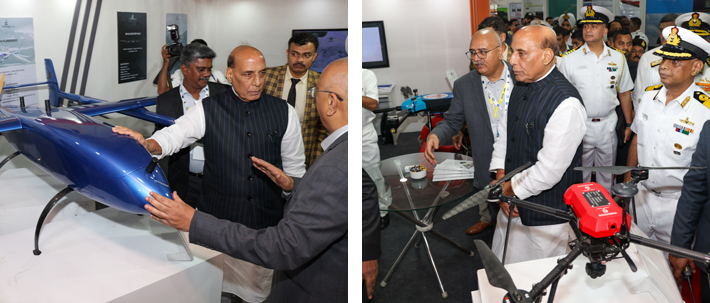
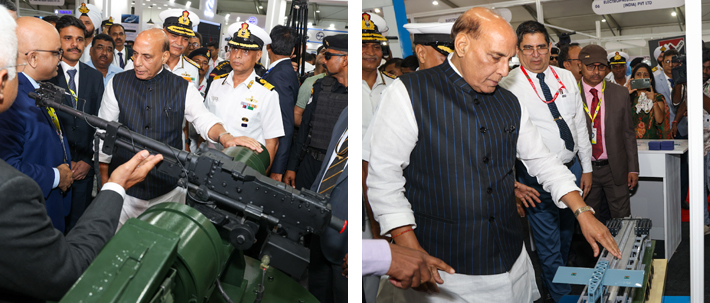
The sea phase of MILAN 2024 was the most complex such exercise thus far and served as a testament to the commitment of participating nations towards promoting peace, stability and interoperability in the maritime domain
A three-day Technical Exposition organised by FICCI in collaboration with the Indian Navy show-cased India’s indigenous defence expertise and invoked considerable interest from the visitors. Besides this, a social gathering, cultural exchanges, sports and sailing events, hikes and visits to places of interest were also organised for the visitors. The Indian Navy also again demonstrated its Deep Submergence Rescue Vessel (DSRV), which is meant to rescue submarines in distress, by actually diving on the wreck of PNS Ghazi off the coast of Visakhapatnam. The DSRV capability with the Indian Navy offers substantial scope for international collaboration with all submarine operating navies.



The precursor to the sea phase was a table-top exercise for participating navies. The sea phase of the exercise included advanced air defence, anti-submarine and anti-surface warfare drills, gunnery shoots on aerial and surface targets, cross-deck operation of helicopters, complex manoeuvres and seamanship evolutions such as underway replenishment drills. The sea phase of MILAN 2024 was the most complex such exercise thus far and served as a testament to the commitment of participating nations towards promoting peace, stability and interoperability in the maritime domain.


Naval Exercises: Strengthening Maritime Security
The genesis of the MILAN series of exercises lies in the post-Cold War era, when the dissolution of the two blocs that most of the world had been frozen into since the end of the Second World War opened up new possibilities of multilateral cooperation for India. During the Cold War years, despite India’s non-aligned foreign policy, the Indian Navy’s international engagements had been severely restricted. The end of the Cold War in 1990 coincided with the opening up of India’s economy in 1991, as also a concerted diplomatic outreach to Southeast Asian countries and the United States. Due to the inherent attributes of flexibility, versatility and unobtrusiveness of naval power, the Government of India enlisted the Indian Navy to support some of its major foreign policy objectives. The initiation of the Malabar Exercises with the US Navy in 1992, and the MILAN Exercises with Southeast Asian navies in 1995 was the principal outcomes of this outreach. The fact that the US elevated Indo-US relations to the strategic level and India become a sectoral dialogue partner of ASEAN in 1992, a full dialogue partner in 1995 (elevated to ASEAN+1 in 2003), as also a member of the ARF in 1996, could be attributed to the successful integration of India’s diplomatic, economic and maritime strategies in the region. Our economic diplomacy initiated with the ‘Look East’ policy specifically re-invigorated our military ties with key Southeast Asian countries such as Indonesia, Philippines, Vietnam and Singapore. It is not surprising that the economic relationship between India and ASEAN, which began in earnest in 1992, resulted in a Free Trade Agreement being signed in 2009. This increased bilateral trade from $420 million in 1995 to $131.58 billion in 2022-23, amply demonstrating the synergy between trade and maritime security.



India’s pivotal geographical position in the Indian Ocean requires it to play a central role in combating these threats for the greater good of all countries
Translating into ‘meeting’ in Hindi, the first MILAN was held in 1995, with the participation of four littoral navies, Indonesia, Singapore, Sri Lanka and Thailand. Held at Port Blair, located strategically at the gateway of Malacca Strait, the first exercise was aimed to promote cooperation in maritime security and Humanitarian Assistance and Disaster Relief (HADR). At the time that it was held, it was a landmark exercise, as all the participating countries had never exercised as one group before that. The interactions and transparency brought about by the exercise had the impact of dramatically warming bilateral relations with our maritime neighbours in Southeast Asia and beyond. The scope of the multilateral gathering has grown steadily over the years, with the 2024 version being the most complex and advanced. Ten versions of the exercise were held at Port Blair between 1995 and 2018. Due to its growing size and ease of catering to a large number of ships on the mainland, the exercise was shifted to Visakhapatnam in 2022, and the current MILAN was the second one to be held at Visakhapatnam.
Conclusion: A Testament to Unity and Cooperation
The MILAN series of exercises have been the precursor for several other multilateral initiatives taken by the Indian Navy over the past three decades, including the Indian Ocean Naval Symposium (IONS), the Goa Maritime Conclave (GMC) and Goa Maritime Symposium (GMS). There has also been a tremendous increase in the Indian Navy’s bilateral and multilateral interactions with navies from friendly foreign countries over the past three decades since the MILAN exercises began. India today has defence agreements/MoUs with almost all regional and most major global navies. In the recent past, India has graduated to concluding logistics support agreements and white shipping information agreements with several key countries, thereby increasing the operational range of the Indian Navy’s ships and aircraft and also the transparency of the maritime domain. The Indian Navy’s Information Fusion Centre – Indian Ocean region (IFC-IOR) located at Gurugram also hosts several observers from friendly navies. In addition, the Indian Navy has always been an important training centre for the world’s navies and today trains over 1,000 officers and sailors in a range of disciplines every year. The Indian Navy’s hydrographic organisation has also undertaken several surveys for IOR littorals. All these activities indicate the trust and confidence that other countries repose in the Indian Navy’s professional capabilities.
The MILAN exercises illustrate the Indian Navy’s leadership in engendering a safer and more stable IOR for the benefit of all maritime countries
There have been several other spin-offs from these interactions – for example the ease with which the Indian Navy could conduct the post-tsunami HADR operations in 2004 was largely because of the inter-operability and personal bonds built up with the tsunami-affected countries during interactions such as MILAN. These exercises also bring together small and larger (and more advanced navies) on the same platform, thereby allowing mutual learning, particularly for smaller navies. Such interactions also break down artificial barriers and increase transparency between countries through direct communication and interaction, not only at sea, but even more importantly during exchanges ashore, thereby engendering mutual understanding and respect. The bonds built between personnel of different navies are very important in helping to build better relations between their countries.
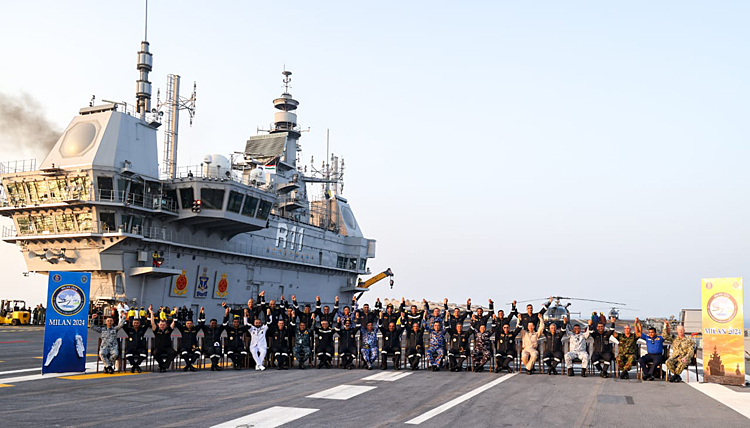
As we complete the first quarter of the 21st century, it is evident that the strategic importance of the Indo-Pacific Region will continue to grow due to the locus of the global economy shifting from the Atlantic to the Indo-Pacific. With the oceans playing a crucial role in global energy security, and the growth in economic dependence of countries on ‘blue economy’, the need to ensure the freedom of safe transit for all mariners and the unhindered sustainable exploitation of the oceans is more important than ever before. However, a multitude of issues threaten this freedom. These include the emergence of a belligerent China as a global maritime power, unresolved ongoing regional conflicts – especially the ongoing Israel-Hamas War with its spill-over effects into the Red Sea, piracy, terrorism, drug smuggling, etc. In addition, global warming and oceanic pollution threaten the very survival of mankind, requiring a concerted global response.
The Indian Navy's Information Fusion Centre – Indian Ocean region (IFC-IOR) located at Gurugram also hosts several observers from friendly navies
India’s pivotal geographical position in the Indian Ocean requires it to play a central role in combating these threats for the greater good of all countries. Speaking at the opening ceremony India’s Defence Minister Shri Rajnath Singh aptly stated, “Our historical experience informs us that Armed Forces play a significant role in preserving peace”. The Indian Navy has emerged as a key security partner in the IOR to both regional and extra-regional navies due to the consistent democratic values of the Indian Republic; its respect for the rule of law; its excellent international diplomatic rapport; and the professional capability of the Indian Navy. The MILAN exercises illustrate the Indian Navy’s leadership in engendering a safer and more stable IOR for the benefit of all maritime countries. The latest version of MILAN has been another good ‘meeting’ of minds and hearts, which will contribute to strengthening goodwill and friendship between participating countries for mutual benefit.





